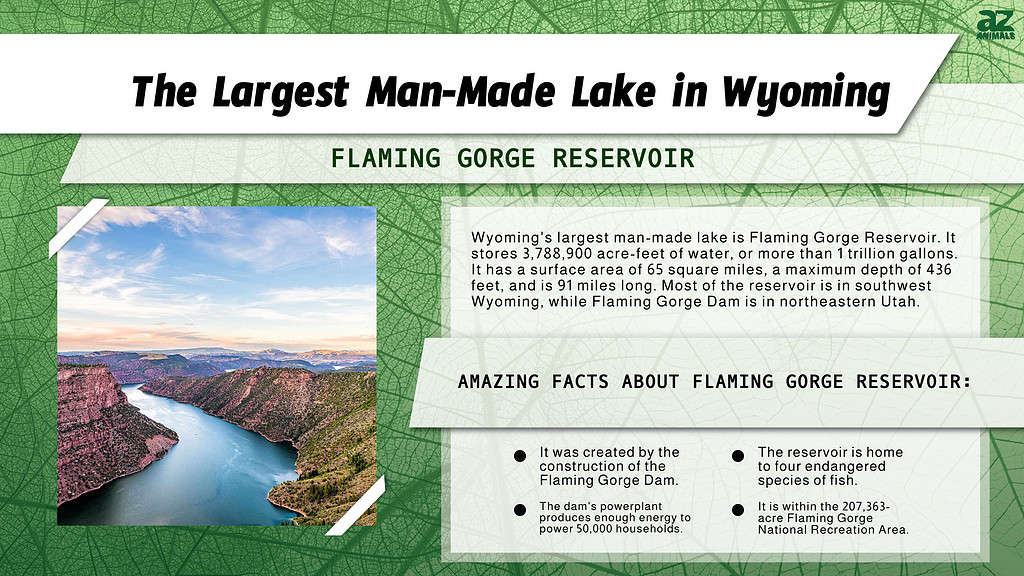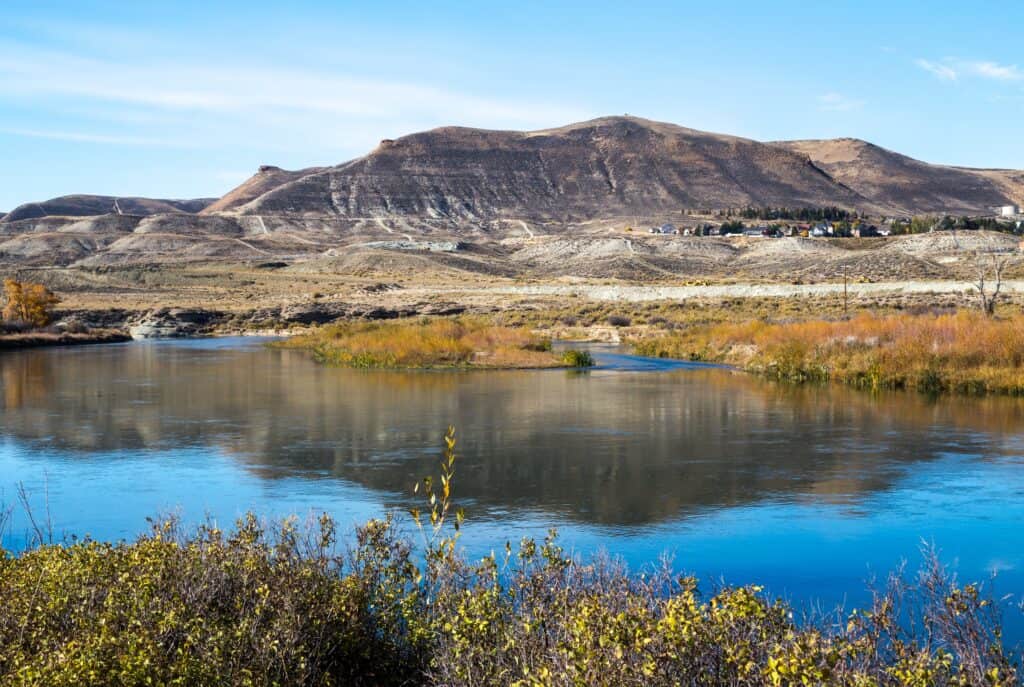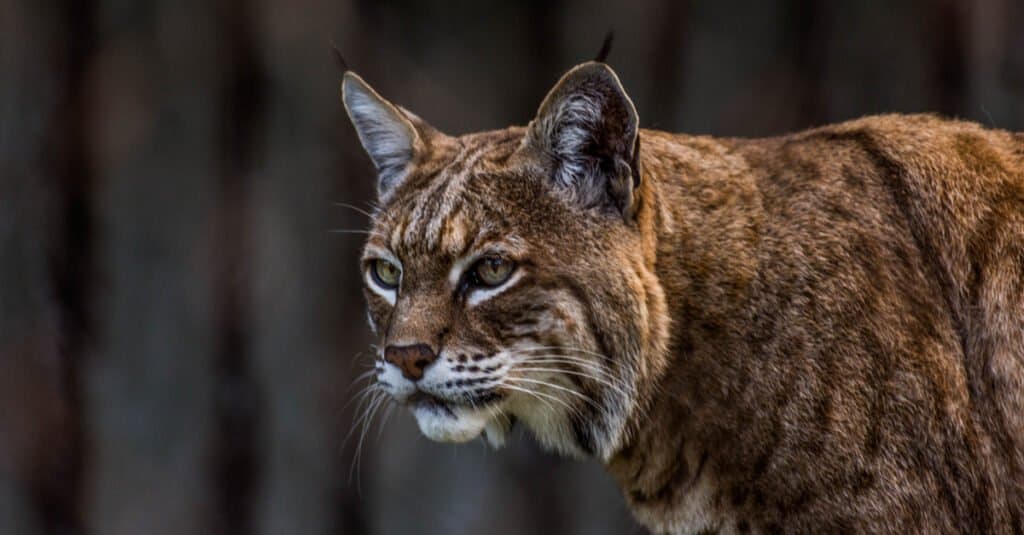Wyoming is a true frontier country. By land area, it’s one of the largest states in the United States and at the same time one of the least populated, with only one person per 111 acres of land! If you want to see pristine natural terrain, unchanged for eons, this is the place to go. But one of the state’s most impressive features is man-made.
Flaming Gorge Reservoir is the largest man-made lake in Wyoming. Although the dam that impounds the reservoir is located some 32 miles south in Utah, the lion’s share of the lake itself is in Wyoming. The dam itself is an engineering wonder, and the reservoir is a beautiful spot for recreation, camping, fishing, and hunting. All in all, it’s a vacation spot that doesn’t disappoint!

Key Facts about Flaming Gorge Reservoir
- Flaming Gorge Reservoir was created when builders constructed the Flaming Gorge Dam in four years from 1958 to 1962. The dam generates hydroelectric power for Wyoming, Utah, Colorado, New Mexico, Arizona, Nebraska, and Nevada.
- An archaeological and historical survey of the land that was flooded was done before the project was complete.
- The reservoir stores over a trillion gallons of water. It’s 436 feet deep at the deepest point.
- It is part of the Flaming Gorge National Recreation Area, which has breathtaking views of towering red canyon walls, arid western forest, and indigenous wildlife.
- Types of fish in the reservoir include four endangered species: the razorback sucker, Colorado pikeminnow, humpback chub, and bonytail.

Flaming Gorge Reservoir was formed by the damming of the Green River downstream.
©Victoria Ditkovsky/Shutterstock.com
Flaming Gorge Dam and Reservoir
Starting in 1958, it took four years to build the dam that would fill the 91-mile-long Flaming Gorge Reservoir. Building it required destroying a number of private homes so they would not present an underwater hazard to people using the lake. The city compensated owners. University of Utah professor Jesse Jennings did an archeological historical survey to rescue any artifacts of significance. Although he recommended further study of the local history before the project was complete, this never took place, so the full extent of what might have been lost is unknown.
One of the main purposes of the project was to generate hydroelectric power for the region. Today, the dam’s powerplant produces about 500 million kilowatt hours of clean, renewable energy a year, enough to power 50,000 households. The power goes to seven western states: Wyoming, Utah, Colorado, New Mexico, Arizona, Nebraska, and Nevada.
Flaming Gorge Reservoir stores 3,788,900 acre-feet of water, which is over 1 trillion gallons, and it is partially located in both Wyoming and Utah. The dam is actually located in Utah, but the majority of the reservoir is in Wyoming. The deepest point of the lake reaches 436 feet, which is more than 11 school busses long. The water surface covers 65 square miles. This water storage helps moderate flooding downstream and provides a backup water supply for years of drought.

Flaming Gorge Dam and Reservoir help moderate flooding and droughts where the Green River flows, including Utah.
©T.Schofield/Shutterstock.com
Ecology of Flaming Gorge Reservoir
The 207,363-acre Flaming Gorge National Recreation Area, where you’ll find a breathtaking wilderness of red canyon walls, arid western forest, and indigenous wildlife surrounding the reservoir. Some of the species you might spot are moose, Rocky Mountain elk, pronghorn antelope, and bighorn sheep. You might even be lucky enough to see a carnivore like the river otter, black bear, bobcat, or mountain lion. A large colony of ospreys nests on the shores of the lake, and sometimes you might see bald and golden eagles. There are lots of different types of trout, but also kokanee salmon, smallmouth bass, and common carp. Four types of endangered fish live in the reservoir: the razorback sucker, Colorado pikeminnow, humpback chub, and bonytail. There are also some invasive species, like the burbot and the zebra and quagga mussels that can attach to and damage boats.

Bobcats are one of the predators you might spot in the Flaming Gorge area.
©Victor Arita/Shutterstock.com
What Can You Do at Flaming Gorge Reservoir?
Flaming Gorge Reservoir is a good place to go camping with plenty of campsites near the water, though you should book a site a month in advance in summer. You can fish from the shore or from a boat, available for rental if you don’t have your own. Wakeboarding, tubing, waterskiing, jet skiing, kayaking, windsurfing, and rafting are all popular on the river and the lake. The area around the reservoir is awesome for hiking, backpacking, cross-country skiing, or snowmobiling. Altogether, the largest man-made lake in Wyoming is a place of incredible natural beauty and a thriving wildlife habitat. A perfect spot to get away from it all!
Where Is Flaming Gorge Reservoir Located on a Map?
Flaming Gorge Reservoir straddles the southern border of Wyoming and the northern region of Utah. It runs off into Green River in Wyoming and is a prominent feature of the Flaming Gorge National Recreation Area that covers the southwest corner of Wyoming and the northeast corner of Utah.
The photo featured at the top of this post is © iStock.com/ablokhin
Thank you for reading! Have some feedback for us? Contact the AZ Animals editorial team.






